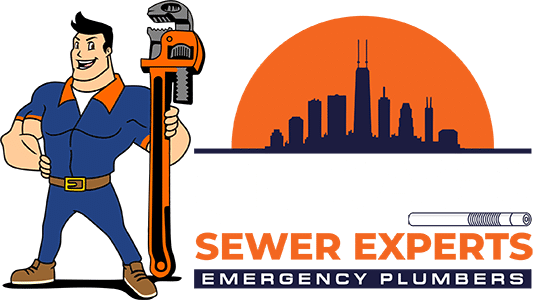Clean, safe water is essential for our daily life, whether it’s for cooking, cleaning, or personal hygiene. Backflow, a reverse flow of water in a plumbing system, can contaminate your water supply with hazardous substances, posing a significant risk to your health and well-being. As a property owner in the Greater Chicago area, understanding backflow, its causes, and how to prevent it from occurring in your plumbing system is essential for safeguarding your water supply.
At Chicago Sewer Experts, we specialize in providing top-notch residential and commercial plumbing services across the Greater Chicago area. Our skilled technicians are knowledgeable about backflow prevention methods and can guide you in selecting the best solution to keep your water supply safe from contamination.
In this blog post, we will delve into the importance of backflow prevention, discuss the common causes of backflow, examine various backflow prevention devices, and provide tips to maintain a safe and efficient plumbing system. Trust the expertise of Chicago Sewer Experts to help you protect your home or commercial property’s water supply from potential backflow issues.
1. Importance of Backflow Prevention
Backflow prevention is crucial for maintaining the safety and purity of your water supply, as backflow can introduce contaminants that pose significant health risks. Some key reasons to prioritize backflow prevention include:
- Protecting Public Health: Backflow prevention safeguards building occupants’ health by ensuring clean water delivery, free from pollutants and harmful substances.
- Complying with Local Regulations: Chicago has strict backflow prevention requirements for both residential and commercial properties, and failure to comply may result in fines or other penalties.
- Maintaining Plumbing System Integrity: A well-maintained backflow prevention system minimizes the risk of damage to your plumbing infrastructure due to cross-contamination.
Solution: By understanding the importance of backflow prevention and adhering to local regulations, you can protect the health of your building’s occupants and maintain an efficient, safe, and compliant plumbing system.
2. Common Causes of Backflow
Backflow can occur for various reasons in a plumbing system, and understanding these causes can help prevent such incidents:
- Backpressure: Backpressure occurs when the water pressure on the customer’s side of a plumbing system surpasses the supply side pressure. This situation can cause contaminated water to flow backward into the main water supply. Causes of backpressure can include booster pumps, elevated buildings, or pressure created by thermal expansion in water heaters.
- Backsiphonage: Backsiphonage is the reverse flow of water caused by negative pressure in the supply piping. This scenario can result from sudden drops in water pressure due to water main breaks, firefighting activities, or heavy water demand during peak usage periods.
Solution: By recognizing the common causes of backflow, you can take preventative measures to avoid potential contamination of your water supply.
3. Types of Backflow Prevention Devices
Various backflow prevention devices are available to suit the needs of different plumbing configurations and protect the water supply from potential contamination:
- Air Gap: An air gap is a simple and effective backflow prevention solution requiring no moving parts. It involves creating a physical separation between the water supply outlet and the receiving vessel or fixture to ensure that contaminated water cannot siphon back into the potable water system.
- Reduced Pressure Zone (RPZ) Assemblies: RPZ assemblies are designed for high-hazard applications and protect against both backpressure and backsiphonage. These devices utilize two independent check valves separated by a pressure-reducing chamber, which maintains a lower pressure zone between the valves to prevent backflow.
- Double Check Valve Assemblies: Double check valve assemblies consist of two independently operating check valves placed in series. While less effective than RPZ assemblies, they are suitable for low to medium hazard applications and protect against both backpressure and backsiphonage.
- Atmospheric Vacuum Breaker (AVB): AVBs are simple and cost-effective devices that prevent backsiphonage by allowing air to enter the downstream piping when the water supply pressure drops. These devices are suitable for non-continuous pressure applications, such as irrigation systems or hose bibs.
Solution: Understand the unique needs of your plumbing system and choose the appropriate backflow prevention device to protect your water supply from contamination effectively.
4. Backflow Prevention Maintenance Tips
To ensure the continued effectiveness of your backflow prevention system, follow these maintenance tips:
- Annual Inspections: Schedule regular inspections of your backflow prevention devices by a certified professional to ensure proper operation and compliance with local regulations.
- Prompt Repairs: Address any issues with your backflow prevention system as soon as they arise to minimize the risk of contamination and maintain system efficiency.
- Winterize Outdoor Devices: Protect outdoor backflow prevention devices from freezing temperatures by insulating or draining them during winter months to prevent damage and system failure.
- Keep Records: Maintain accurate records of your backflow prevention system inspections, repairs, and devices to demonstrate compliance with local regulations and facilitate proper maintenance.
Solution: By adhering to these maintenance tips, you can prolong the lifespan of your backflow prevention devices and ensure that your plumbing system continues to deliver clean, safe water to your property.
Conclusion
Backflow prevention is essential for safeguarding the health of your building’s occupants and maintaining the efficiency and reliability of your plumbing system. By understanding the importance of backflow prevention, proactively addressing its causes, selecting the appropriate devices, and following proper maintenance practices, you can protect your water supply from contamination in your Chicago home or commercial property.
Is your plumbing system adequately protected from backflow? Contact Chicago Sewer Experts today for expert consultation, installation, and maintenance services, ensuring the safety and quality of your water supply. Our team of skilled technicians is dedicated to providing the highest level of service to secure your plumbing infrastructure and prevent backflow-related issues in the Greater Chicago area.

Recent Comments